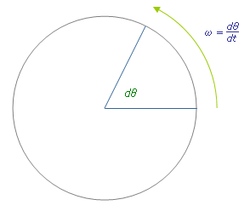Scale relativity
Scale relativity is a theory of physics initially developed by Laurent Nottale, working at the French observatory of Meudon, near Paris, which extends special and general relativity with a new formulation of scale invariance preserving a reference length, postulated to be the Planck length, which becomes invariant under zoom. This requires abandoning the hypothesis of differentiability for space-time, instead suggesting that space-time has a fractal structure. The quantum/classical transition is replaced with a fractal/non-fractal transition, specifically a divergence in the length of quantum paths at short scale.
Galilean Scale Relativity
Observation and Motivation
Two everyday observations are, that if we look at an object at a very small distance, say through a microscope, than even the slightest movement of this object will appear very fast; if on the other hand we look up to the sky and follow the movement of a jumbo-jet we sometimes wonder why it doesn't fall down, because from this distance it appears to be almost standing still.
Is this a pure subjective perception? The passengers in the jet will say that the clouds rushing by prove that the plane is moving fast, whereas the earth below is nearly standing still. And if the 'object' under the microscope were an ant that just woke up from coma, it would observe itself moving - relatively to the surface it is bounded to - with merely a few centimeters per minute.
This reminds of the situation, where one walks inside a train. Oneself observes walking rather slow, while an observer outside will add the velocity of the train to the walking speed, and say that the person inside the train is walking fast relatively to the ground. This led Galilee to formulate a relativity principle of motion. Likewise the former observations led Nottale to formulate scale relativity.
Mathematical formulation


While Galilean relativity of motion can be expressed by differences:
The relativity of scales can be expressed by ratios:
This can be derived by taking the Perspective (visual) in account, which is the phenomena that as objects become more distant, they appear smaller, because their angular diameter (visual angle) decreases. Then an observer on the ground sees v ' as the tangential velocity v (observed inside the plane) scaled down by the ratio of r'/r , that's between radius r (distance to the observed movement) and r ' (distance to the projective plane, e.g. 'the window').
The last term follows from (*)
Now the difference between a jet flying in a circle from it's own perspecitve , i.e. a rotation that our intuition would favor as a real movement, and a perspectively projected rotation conceived by a far away observer, is that
- in the real case the angular velocity is constant, while the tangential velocity depends on the radius
(*)
- in the projective case the tangential velocity v (the speed the passengers observe) is constant, while here the angular velocity (a.k.a angular frequency) depends reciprocal on radius r
That is a jet flying through your garden (small r) will have a much higher angular velocity, than one that is 'hanging' in the sky. Now what if r goes to zero? Then the angular velocity would become infinite for any non-zero v > 0 (ultraviolet catastrophe). This is the analog to infinite speed in Galilean Relativity, when one rides on a train that is riding on a train, ... ad infinitum. This leads to (Lorentzian) scale relativity that is analogous to special relativity.
(Lorentzian) Scale Relativity principle
The scale relativity extends to scales the reasoning made by Einstein on speeds in special relativity: just like a constant speed in Maxwell's equations, which does not appear to depend on the speed of the observer, suggests that the law of combination of speeds must preserve this invariant, similalry, the appearance of a constant length in Schrödinger's equation suggests that the law of combination of scales must preserve this invariant. In other words, just like is a physical speed limit, is a physical length limit.
Predictions and retrodictions
Scale relativity made a number of true predictions, as well as a number of retrodictions, both in cosmology and at small scale, including:
- Prediction of the location of exoplanets[1]
- Explanation of some observed large-scale structures [2]
- Relation between mass and charge of the electron [3]
See also
- Doubly special relativity
- Theory of incomplete measurements
- Conformal group
- Fractals
- Perspective (graphical)











